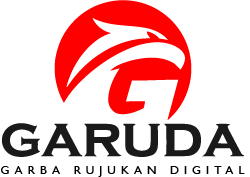THE USE OF AUTHENTIC MATERIALS IN TEACHING READING COMPREHENSION
DOI:
https://doi.org/10.22460/eltin.v2i2.p%25pAbstrak
Teachers often have difficulties in finding the appropriate learning materials in teaching reading. Without appropriate reading texts that suit them, students spend long hours in the classroom with poor achievement in reading comprehension. This research, therefore aims to find out whether the use of the authentic material can improve students’ reading comprehension. With regard to the purpose of the research, an experimental research is applied where twenty-five pairs of students from two groups are observed. The data are obtained from pre-test and post-test. The data are statistically analyzed and then compared by using mann whitney U test. The result of the study reveals that the use of authentic material in teaching reading does not significantly improve students’ reading comprehension. Nevertheless, it is recommended that teachers use authentic reading materials for a change. In addition, when bringing authentic materials into classroom, they should be used in accordance with students' ability, as well as with suitable tasks being given. Keywords: Authentic Material and Reading ComprehensionReferensi
Berardo, S. A. (2006). The Use of Authentic Materials in the Teaching of Reading: LinkSuccess. The Reading matrix, 6 (2). Retrieved December, 10th, 2010 from http://www.readingmatrix.com/ articles/berardo/article.pdf
Brown, H.D. (2001). Teaching by Principles: An Interactive Approach to Language Teaching. White Plains, NY: Addison Wesley Longman.
Cahyono, B.Y. (2010). The Teaching of English Language Skills and English Language Component. Malang: State University of Malang Press.
Dechant, E. V. (1982). Improving the Teaching of Reading. News Jersey: Prentice- Hall.
Field, A. (2009). Discovering Statistics Using SPSS. London: Sage.
Hatch, E. & Lazarton, A. (1991). The Research Manual: Design and Statistics for Applied Linguistics. Los Angeles: University of California
Harmer, J. (2007). How to Teach English. Essex, UK: Pearson-Longman.
Harris, R. A. & Sipay, E. R. (1980). How to increase Reading Ability. NY: David Mckay.
Mulyani, M & Siswayani, P. (2006). Meaningful English for Academic Purpose (EAP)Learning with Student’s Preferred Text Types and Reading Activities. Presentation in 57th TEFLIN the International Conference: Indonesia University of Education.
Nuttal, C. (1996). Reading Skills in a foreign Language. Oxford: Heineman.
Tercanlioglu, L. (2004). Postgraduate Students’ Use of Reading Strategies in L1 and ESL Contexts: Link to Success. International Education Journal, 5 (4). Retrived November 5th, 2010 from http://www.iej.cje.ne
Wallace, M.J. (1998). Action Research for Language Teachers. Cambridge: Cambridge University Press.









